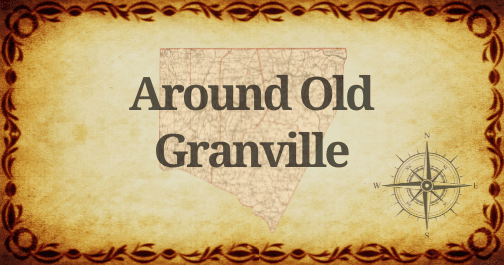Soldier Memorial Sports Arena in Butner, which serves as a recreational center as well as the site of the Camp Butner Museum, was built in four days back in 1942 by a special team of builders who traveled about constructing buildings for use at military installations during World War II.
It is one of about 1,700 buildings that popped up like mushrooms across the 60 square miles or so of farmland to provide training facilities for U.S. soldiers. By the time the war ended in September 1945, things were winding down at Camp Butner, and local historian Mark Pace said it gave rise to the town of Butner, a unique town in that, until 2007, was operated completely by the state of North Carolina.
When the U.S. Army Corps of Engineers decided that this part of Granville County would be the site of the camp, they offered landowners cents on the dollar for their property, which happened to be perfect for growing flue-cured tobacco.
“It was a take-it-or-leave it” proposition,” Pace told WIZS’s Bill Harris on Thursday’s Around Old Granville segment. If the offer wasn’t accepted, the government just condemned the property anyway, he noted.
That didn’t sit too well with many landowners, a sentiment that lingers still today with descendants of those farmers, many of whom didn’t return, even after the war ended.
“It was a major upset to their everyday lives,” Pace said, adding that to say the government’s actions were contentious would be an understatement.
More than 425 families – 1,300 people – had to relocate, not to mention churches, school buildings and more than 1,600 graves.
Just like the recreational facility, the barracks, roads and other infrastructure was built in an incredibly short time, Pace said, and by August 1942 the camp was operational – complete with air field, a railroad spur line, churches, a hospital and even a radio station. Construction went on 24 hours a day, 7 days a week in response to the national emergency – remember, the United States had just entered into the war in December 1941, after the Japanese attacked Pearl Harbor.
Camp Butner took $28 million to build in the early ‘40’s, Pace said. In today’s dollars, that sum would hover around half a billion dollars. Workers got paid $1.25 an hour, which would be about $30 an hour in today’s money.
Because so many young men were fighting in Europe, local farmers faced a labor shortage. They had a hard time getting all the work done on the farm – crops still had to come in, the dairy cows needed milking and the cash crop – tobacco – had to get in the barns.
“Some of the prisoners were allowed to leave the camp and go to work,” he said. And the government said farmers had to pay them wages.
After the war ended, only about half of the land was sold back to the original landowners, their descendants or others. Pace said one man from Durham bought 3,000 acres for the grand total of $10,000. No need to break out the calculators – that’s less than $3.50 an acre.
The National Guard kept about 5,000 acres and the state of North Carolina bought what was left – for the grand sum of $1.
And that’s how all those state-run facilities came to be located in Butner – the alcohol rehab center, Murdoch center and more, Pace said.
Today, the population of Butner is about 8,600. Where soldiers once trained and POWs were housed are now subdivisions and other trappings of post-War suburbia. Many of the buildings are gone, but some – like the sports complex – remain. St. Bernadette’s Catholic Church occupies a former church building at Camp Butner, for example.
There’s probably no community like Butner in the entire country, Pace mused.
Butner has a rich past for a town that’s been incorporated less than 20 years.
The Camp Butner Museum is open the first Saturday of each month from 10 a.m. to 3 p.m. Pace invites the public to come visit the museum, which has many artifacts and photos. The address is 416 24th St., Butner.
CLICK PLAY!
